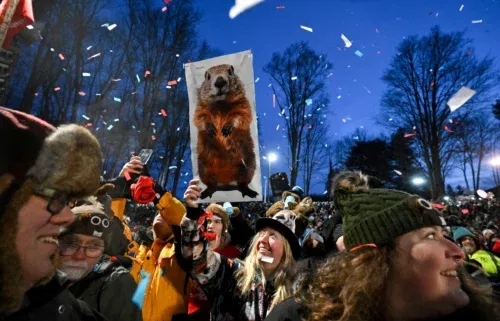Winter outlook highlights approaching La Nina

By Jared Shelton News-Press NOW meteorologist
Fall is in full swing, and soon enough winter will be closing in on the northern hemisphere. NOAA’s Climate Prediction Center released its official winter outlook late last week, a forecasting method looking ahead to likely precipitation and temperature trends through December, January and February.
A combination of statistical long-range models, analogs from years past and ocean-atmosphere connections such as ENSO (El Nino Southern Oscillation) are all considered in the long-lead winter outlook, making it a complex endeavor.
This year’s winter outlook screams La Nina, the cold phase of ENSO when waters across the equatorial Pacific are colder than normal, opposite to El Nino, which influenced winter weather patterns across the Continental United States last year. La Nina winters tend to favor below-average temperatures across parts of the Upper Midwest and northern tier along with pockets of above-average precipitation. The opposite is favored for the southern U.S., where warmer and drier conditions are more typical of La Nina winters.
Where does this leave us here in the Central Plains this winter? The answer is far from cut and dry, as America’s Heartland is subject to strong variability regardless of ENSO, which is known to have stronger signals across the northern and southern tiers of the United States. This is clear in the 2024-2025 winter outlook, which gives equal chances for above- or below-normal temperatures and precipitation for nearly all of Missouri, Iowa, Kansas and Nebraska from December to February.
Aside from regional variance in the long-range winter forecast, the relative strength of La Nina will add another layer of unpredictability this time around. Unlike last year’s El Nino, which was particularly robust with well-above-average sea-surface temperatures in the equatorial Pacific, the approaching La Nina is forecast to be on the weaker side, further muting the typical effects this pattern is known to have across the lower 48 states.
Regardless of trends in the long-range winter outlook, the most memorable winter storms and cold air outbreaks operate on much smaller timescales, often coming into focus several days before unleashing snow and frigid temperatures, not weeks or months ahead. In the meantime, the rest of fall is looking to be on the tame side, as periodic warm spells are forecast to continue through much of November from the Southwest to the Great Plains, and even parts of the Northeast.



